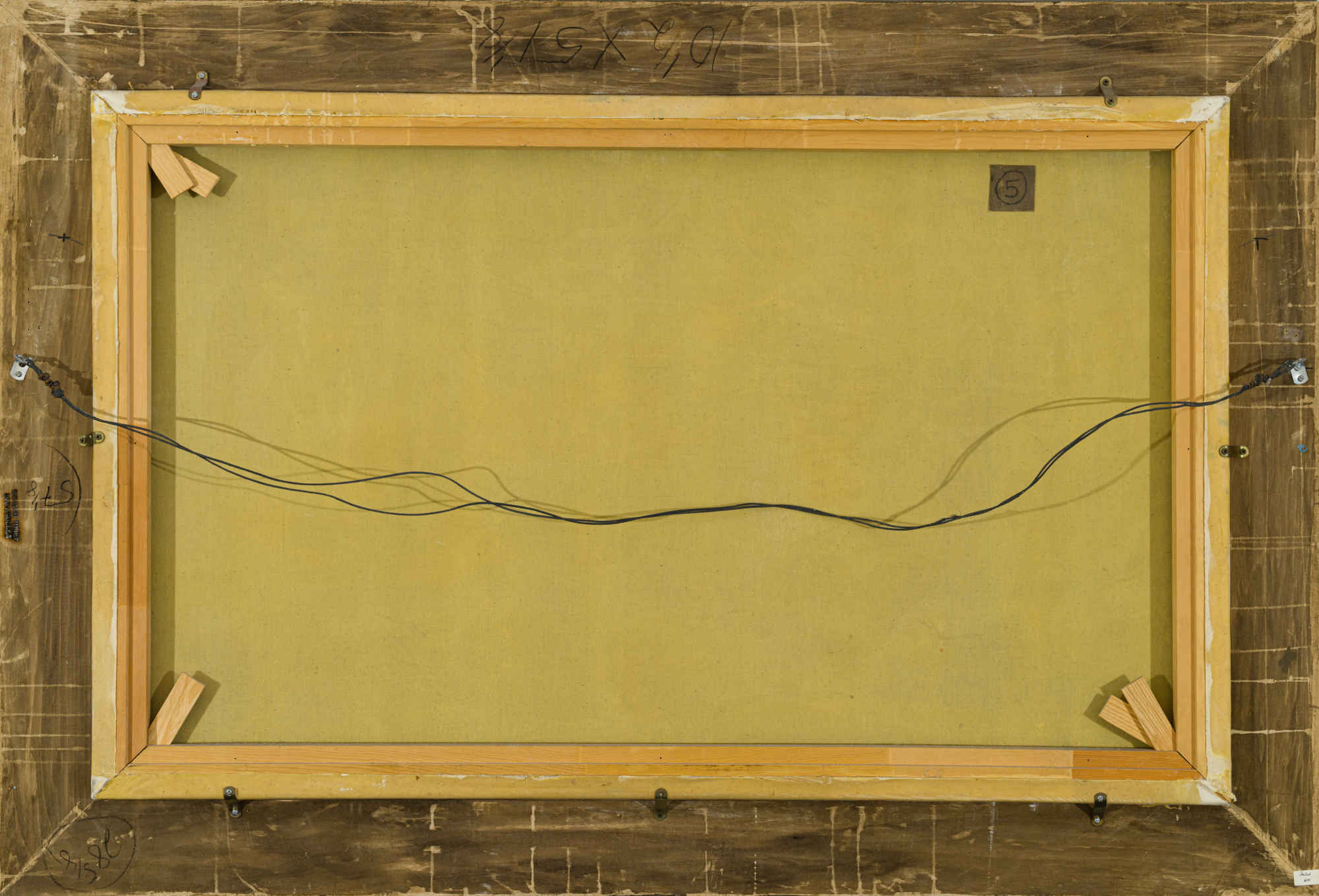Artwork for Sale
The Champlain Market, Quebec, 1907
76.2 x 121.9 cm
Inscriptions
signed and dated, ‘Alson Clark - 07’ (lower left)Provenance
Private collection, Westmount, QuebecExhibitions
Montreal, Art Association Gallery, Annual Exhibition of the Royal Canadian Academy of Arts, April 1907, no. 42.Literature
“The Royal Canadian Academy,” Toronto Daily Star, 3 April 1907, 9.
“Exposition de tableaux,” La Presse, 2 April 1907, 9.Alson Clark is an important American artist, originally from Chicago, who ultimately enjoyed a significant career in Pasadena, California. His paintings of the generation of The Champlain Market, Quebec, 1907 are remarked by influences of James Abbott McNeil Whistler, a preoccupation with tonal qualities in art. Later he developed an impressionist approach to painting. His career and art is the subject of a book, Alson S. Clark by Jean Stern, art historian, curator and author, [1] and also a dissertation by Deborah Epstein Solon submitted to the graduate faculty in art history as part of her fulfillment of the requirement for the degree of the Doctor of Philosophy at the City University of New York in 2004. Hers is an important contribution to a proper appreciation of the artist. [2]
Within a year of painting The Coffee House, a painting owned by the Art Institute of Chicago, by fortunate happenstance, this developing American artist, briefly made his home in Quebec City, where he painted a limited number of important paintings, conceivably the best of them the painting offered here, the Champlain Market.
Alson Clark’s contributions of 4 works to the RCA of the Arts Exhibition of 1907, including The Champlain Market, Québecoffered here, prompted the following comment published in La Presse on April 2, 1907: “Mr. Alson Clark is a painter of crowds and large groups. One must see his scenes of Champagne market in Quebec, numbers 42 [Champlain Market, Quebec] and 43. This artist has an extraordinary sense of color, and his paintings are much admired.” [3]
Toronto Daily Star, 3 April 1907, p. 9, as a mention of his paintings at the RCA refers to Clark as being “A strong and promising painter […] of Quebec who gives the old Quebec market in a masterly way.” [4]
Briefly, Alson Clark’s father was a businessman in Chicago who met with some financial business success. Alson Clark himself was born in Chicago in 1876 and after completing various studies pursuit art at the school of the art Institute of Chicago, the Art Students League of New York, the Chase School of Art (now called Parsons School of Design), New York and the Académie Carmen in Paris.
In 1883 The family purchased a small island on the American side at thousand islands, at Alexandria Bay, comfort Island it is called. There Clark’s father built a large Victorian cottage, one which remained in the family until 2013.
“Newly married to Atta Medora McMullin, who sometimes served as his model, Clark was back in Europe in 1902. Based in Paris, he also worked in Brittany and Italy, painting both figural works and landscapes that around 1907 began to manifest the broken brushwork and strong outdoor color and light of impressionism. In addition to seeing his work juried into the prestigious Paris Salon exhibitions, Clark found exposure and sales in American venues ranging from the 1904 Louisiana Purchase Exposition (where he won a bronze medal) to the Society of American Artists’ 1905 show, as well as the Art Institute’s American art annuals; the museum gave him solo shows in 1906 and 1916.” [5]
Not to be overlooked, of course, are his contributions of four paintings to the Royal Canadian Academy of the Arts exhibition of 1907 where The Champlain Market, Quebec was exhibited.
The facts of Clark’s stay in Quebec City as described in Dr Deborah Epstein Solon are that in 1906, while working at his home in Watertown, New York and then summering at Comfort Island, New York, he and his wife, Medora, intended to travel to Japan:
The plan was to embark for Japan from Quebec, and so the couple arrived in Quebec the first week of November with every intention of proceeding to the Orient. The trip to Japan never materialized. They were overcome with Quebec beauty, and Medora knew from the first day that the original plan would be derailed. “We crossed the ferry and took a cab up a steep hill like a mountain side to the château Frontenac… The views from it are magnificent. There is so much dignity and majesty in all and in the late afternoon, I have never seen anything more poetic.” And not entirely for pedestrian concerns, Clark became increasingly anxious that Japanese cuisine would be unpalatable – having been warned off raw fish – making his stay in this charming European influenced town of Quebec that much more enticing (and gastronomically satisfying). [...] Clark immediately began to sketch and paint en-plein-air, in spite of the occasional subzero temperatures. [...] Clark often needed snowshoes to reach his destination.[6]When the winter turned into spring – and the glistening white powder of snow melted into slush – the Clarks decided to return to Paris. [7]
______________________
Footnotes:
[1] Jean Stern, Alson S. Clark (Los Angeles: Petersen Publishing Company, 1983).
[2] Deborah Epstein Solon, “The Life and Work of Alson Skinner Clark,” PhD diss., (City University of New York, 2004).
[3] “M. Alson S. Clark est le peintre des foules, des multitudes. Il faut voir ses scenes du marché Champlain à Qué-bec, les Nos 42 et 43. Cet artiste a un sens extraordinaire des couleurs, et ses tableaux ont provoqué beaucoup d’admiration.”
“Exposition de tableaux,” La Presse, 2 April 1907, 9.
[4] “The Royal Canadian Academy,” Toronto Daily Star, 3 April 1907, 9.
[5] Wendy Greenhouse, “Alson Skinner Clark 1876–1949,” Artists, M. Christine Schwartz Collection, accessed May 16, 2024,https://schwartzcollection.com/artist/alson-skinner-clark/ .
[6] Epstein Solon, “The Life and Work of Alson Skinner Clark,” 55.













